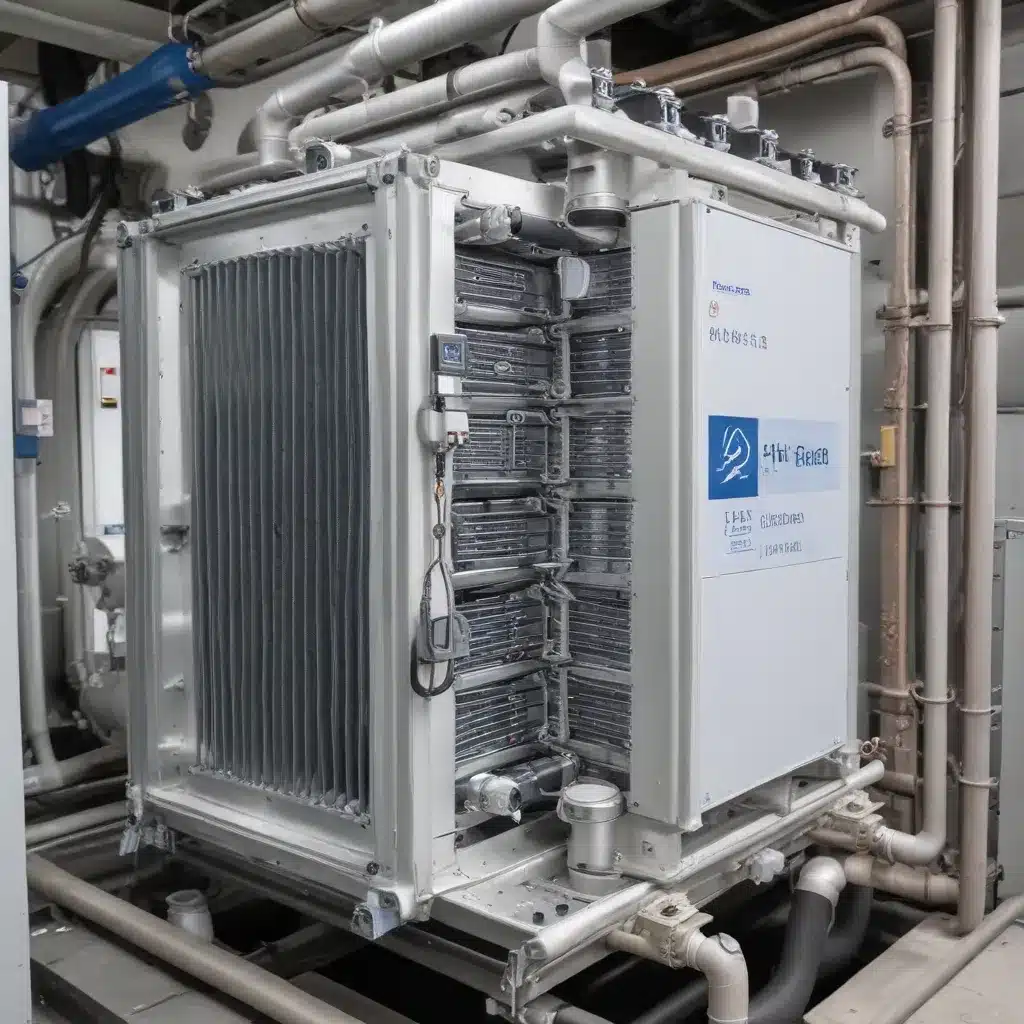
The Importance of Thermal Management in Hydrogen Fuel Cell Systems
Hydrogen fuel cell technology has emerged as a promising solution for clean energy generation, with applications spanning transportation, stationary power, and portable electronics. However, the efficient thermal management of these systems is crucial for optimizing performance, ensuring reliability, and prolonging the lifespan of critical components. Air-cooled heat exchangers play a pivotal role in this thermal management process, effectively dissipating the heat generated by the fuel cell stack and auxiliary systems.
Leveraging Advanced Air-Cooled Heat Exchanger Design
Traditional air-cooled heat exchangers have served the industry well, but the increasing demands of hydrogen fuel cell systems call for more innovative and efficient solutions. Advanced air-cooled heat exchanger designs, incorporating features such as enhanced heat transfer surfaces, optimized airflow paths, and intelligent control systems, can significantly improve thermal management capabilities.
One particularly promising approach is the integration of phase change materials (PCMs) within the air-cooled heat exchanger design. PCMs, with their ability to store and release large amounts of latent heat, can help regulate the temperature fluctuations within the fuel cell system, effectively smoothing out peak loads and enhancing overall thermal stability.
Integrating Phase Change Materials for Enhanced Thermal Management
The incorporation of PCMs into air-cooled heat exchangers for hydrogen fuel cell systems offers several key benefits:
-
Thermal Energy Storage: PCMs can absorb and store thermal energy during periods of high heat generation, releasing it when the system temperature drops, effectively dampening temperature swings and providing a buffer against sudden load changes.
-
Peak Load Shaving: By temporarily storing excess heat, PCM-integrated heat exchangers can help reduce the peak cooling demands on the system, enabling the use of smaller and more efficient cooling equipment.
-
Improved Reliability: Maintaining a stable operating temperature range is crucial for the longevity and performance of fuel cell components. PCM integration helps mitigate the risk of thermal runaway or premature degradation, enhancing the overall reliability of the system.
-
Enhanced Thermal Efficiency: The increased thermal mass and heat transfer capabilities of PCM-integrated heat exchangers can lead to improved overall system efficiency, reducing energy consumption and operating costs.
Design Considerations for PCM-Integrated Air-Cooled Heat Exchangers
Integrating PCMs into air-cooled heat exchangers requires careful consideration of several key design parameters:
-
PCM Selection: The choice of PCM material is crucial, as it must have a melting point and latent heat capacity that are well-suited to the operating temperature range of the hydrogen fuel cell system.
-
Thermal Conductivity Enhancement: PCMs typically have low thermal conductivity, which can limit their heat transfer performance. Techniques such as the incorporation of high-conductivity fillers or the use of microencapsulated PCM can help address this challenge.
-
Structural Integration: The PCM must be seamlessly integrated into the heat exchanger design, ensuring efficient heat transfer, uniform distribution, and structural integrity under the expected operating conditions.
-
Airflow Optimization: The air-side design of the heat exchanger, including fin geometry, flow channels, and fan selection, must be optimized to maximize heat transfer while minimizing pressure drop and energy consumption.
-
Control and Monitoring: Advanced control systems and monitoring technologies can help optimize the operation of PCM-integrated heat exchangers, ensuring efficient thermal management and extended component lifespan.
Case Studies and Industry Applications
The integration of PCM-based air-cooled heat exchangers has been explored in various hydrogen fuel cell applications, showcasing the potential of this technology:
-
Stationary Fuel Cell Systems: PCM-integrated heat exchangers have been deployed in stationary power generation units, helping to manage the thermal loads and ensure reliable operation during periods of fluctuating demand.
-
Fuel Cell Vehicles: In the transportation sector, PCM-based heat exchangers have been integrated into fuel cell-powered vehicles, improving thermal management and enhancing the overall efficiency and range of the system.
-
Portable Fuel Cell Applications: For portable electronics and small-scale power generation, PCM-integrated heat exchangers have demonstrated their ability to provide effective thermal management in compact, lightweight packages.
-
Off-Grid and Remote Installations: In remote or off-grid locations, where access to reliable power and cooling infrastructure may be limited, PCM-integrated heat exchangers have shown promise in maintaining optimal operating conditions for hydrogen fuel cell systems.
Maintenance and Optimization Strategies
Proper maintenance and optimization strategies are crucial for ensuring the long-term reliability and performance of PCM-integrated air-cooled heat exchangers in hydrogen fuel cell systems. Key considerations include:
-
Periodic Inspection and Cleaning: Regular inspections of the heat exchanger’s air-side surfaces, PCM containment, and overall structural integrity can help identify and address any potential issues before they escalate.
-
PCM Replenishment and Rejuvenation: Over time, the PCM may experience gradual degradation or phase change fatigue. Strategies for PCM replenishment or rejuvenation can help maintain the heat exchanger’s thermal storage capabilities.
-
Airflow Management: Ensuring optimal airflow through the heat exchanger, by monitoring and adjusting fan speeds or addressing any blockages or obstructions, can enhance the overall thermal performance.
-
Predictive Maintenance: Incorporating advanced monitoring and data analytics can enable predictive maintenance strategies, allowing for proactive interventions and optimized maintenance schedules.
-
System Integration and Control: Integrating the PCM-based heat exchanger with the overall fuel cell system control and optimization strategies can further enhance the thermal management capabilities and system-wide efficiency.
Conclusion
The thermal management of hydrogen fuel cell systems is a critical challenge that can be addressed through the integration of advanced air-cooled heat exchangers with phase change materials. By leveraging the unique thermal storage and heat transfer capabilities of PCMs, these innovative heat exchanger designs can help regulate temperature fluctuations, shave peak cooling loads, and enhance the overall reliability and efficiency of hydrogen fuel cell technologies. As the industry continues to evolve, the strategic deployment of PCM-integrated air-cooled heat exchangers will play a pivotal role in unlocking the full potential of clean, sustainable hydrogen-based energy solutions.

